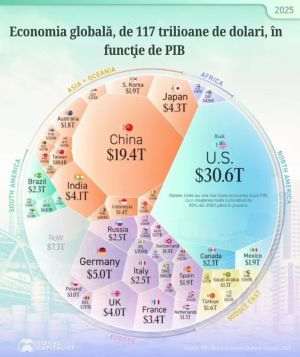George Simion, the president of the Alliance for the Union of Romanians and candidate of this party in the presidential elections of November 24, offers houses to all the people. Simion's offer? 35,000 euros for a two-room apartment of 50-52 square meters, 50,000 euros for a three-room apartment of 68-72 square meters and 70,000 euros for a four-room apartment of 95-100 square meters. In the contract concluded by the president of the AUR with the citizens, it is not said whether the respective surface is the useful one or if it also includes certain annexes or common spaces. It is certain, according to the same contract, that the apartments would be built in the areas near the municipalities of Bucharest, Constanţa, Iasi, Braşov, Cluj-Napoca, Timişoara, Craiova, Oradea, Suceava, Sibiu, Bacău, Baia Mare, Târgu Mureş and Galaţi . On lands that, according to George Simion, would be expropriated because they are left in disrepair or the buildings on them are not taken care of by the descendants of the original owners. The President of AUR also claims that the utilities - electricity, water, natural gas - would be brought to the future neighborhoods by the companies in the field, at their expense, practically forcing them to make investments in the respective areas, investments that at the moment are not scheduled neither by suppliers nor by distribution companies, which are focused in the next ten years on the absorption of European funds allocated to the energy transition.
Another interesting point in the contract concluded by the president of the AUR with the citizens is at the end of the document, where it is specified that the respective act "will begin to produce effects starting from the day Mr. George Simion takes over the mandate of President of Romania".
In other words, it is not about any scam, as the liberal deputy Alexandru Muraru and the co-president of REPER - Ramona Strugariu say, because the citizens have known since the signing of the contract proposed by Simion that, if the latter does not become president of Romania, that contract will not comes into force, i.e. it does not produce its effects. Consequently, the complaint submitted to the General Prosecutor's Office in this regard - of deception - by the liberal deputy and by REPER has no value, as long as the contractual terms are clear for both contracting parties, since the signing of the contract.
The only issues under discussion remain those regarding the management of the security of personal data for the citizens who signed the respective contract, and whether the respective apartments can be rented at the prices stipulated in the contract.
• One million apartments built in 10 years
Regarding the last aspect, George Simion specified: "If we include the authorizations, the efforts made to draw utilities and the land, it can lead to 2,000, 3,000, maybe 5,000 euros per square meter in the center of Bucharest. Everywhere the built square meter costs the same. After that comes the matter of land, utilities, infrastructure and permitting. In this program proposed by us, the land is covered by the state. We don't give free money, we don't give free homes, we offer at the producer price plus a smaller percentage of profit for those who will build these homes, that is, a profit for builders of 10-15%. We offer Romanians who do not have the opportunity to buy at decent prices. I can't force builders to participate in this program because we live in a free market. That is why we are only addressing builders who will want to make this effort, to participate in this program. They will have a lower profit rate of 10-15% as I mentioned before. I'm going to make a public call to all construction companies to say whether or not they can build the apartments at the respective prices. Right now the real estate market is stuck. We will not force anyone. I repeat, the land and procedures for permits, utilities, infrastructure, which are the real problems faced by builders, will be made available by the state. It does not build the state, the state only has the general undertaking in this project".
Through this plan, George Simion claims he will build 100,000 homes a year and one million homes in 10 years. It should also be mentioned that people who want to obtain such an apartment, if they do not have the necessary amount, will have to pay a minimum advance of 1000 euros for the two-room apartment, and will benefit from a real estate loan with zero interest for the next 25 years, the monthly rate being set at 115 euros.
The total value of the program amounts to 50 billion euros, of which 20 billion euros would represent the expenses that the Romanian state should make in the next 10 years, according to the president of the AUR. The 20 billion euros is double the initial value of the Anghel Saligny national program (50 billions lei - i.e. 10 billion euros) through which the governments of Cîţu, Ciucă and Ciolacu invested in the infrastructure of all Romanian localities. Later, the value of the Anghel Saligny program reached 65 billion lei, but it is still below the value of the real estate plan proposed by George Simion.
Regarding this plan, European deputy Gheorghe Piperea stated that it is also implemented in other European states and that it was initially successfully started in Romania, but was perverted by the banking system.
Gheorghe Piperea stated: "This system was also implemented in Romania, but it was perverted by the two Austrian banks that put it into practice: Raiffeisen - the housing bank and BCR - the housing bank. When it was launched, the system was an immediate and huge success. No less than 360 thousand natural persons became clients of these banks, without knowing exactly what they contracted. Depositors were left to believe that the state bonus, amounting to 25% per year, was an interest on the deposit. In reality, as I said above, the bonus is not paid to the depositor, but to the bank, as part of the advance required for the loan, which had to be contracted after a minimum of 8 years of accumulation, exclusively for the construction or purchase of a home. In practice, customers were even babies or pensioners over 70 years old. Almost all customers (minus a few hundred, out of 360 thousand) put money in those banks to earn 25% per year, money from the state. Interest and bonus were never paid. Well, what's more, even the own money deposited in the system was not collected back. Litigation with the two banks is still pending. However, the two housing banks collected all the subsidy from the state, although only a few dozen contracts were signed."
• Simion's plan, challenged by builders and real estate developers
A construction company cannot survive in the market, in the current conditions, with a profit of 10-15% as much as the Simion plan provides, Radu Dumitrescu, Sales Manager of the real estate developer EnVogue Residence, told us.
Radu Dumitrescu stated: "Irrespective of whether it is a construction company or a real estate developer, no company in this field can survive with a profit margin of 10-15%. Then I know that during the communist era, when decisions were centralized because the construction companies were owned by the state, between 600,000 and 800,000 homes were built in Bucharest in 20 or 25 years. How does George Simion want to make a million homes in 10 years, in the current free market conditions? 10-15% is a very small profit, if you add the risks. Look at the balance sheet of any medium or small construction company in Romania. Neither can survive on a 10% profit margin."
The real estate expert mentioned that at the present time the construction of a 2-room apartment with a total area of 60 square meters (of which 54-55 square meters are useful), which also includes a balcony, amounts to 89,600 euros including 9% VAT , the price being one practiced by developers located on the outskirts of the Capital.
Regarding the price of 35,000 euros for a 2-room apartment provided in the Simion plan, Radu Dumitrescu told us: "I don't know what he will build or from what materials. Here are more discussions. It depends on what he builds, from what materials. During the communist period, they were made of prefabricated, reinforced concrete. And if it is built on concrete frames, with brickwork, I don't know how cheap it can be to sell such an apartment for 35,000 euros. Then, if that apartment is 52 usable square meters, then it should have somewhere around 63 built square meters. For such an apartment to cost 500 euros per square meter built, I don't know if it's possible, especially since I don't know what it's made of, with which workers. There are a lot of details regarding the project, the materials, the workforce, etc., which leave their mark on the final price per square meter built, and that's why I can't pronounce with certainty on the Simion plan. But I don't think that at 500 euros per square meter any builder from Romania is willing to work".
In the sense of what was expressed by Radu Dumitrescu, other real estate developers declared themselves, under the protection of anonymity, who told us that the Simion plan does not present a credible source of information, is not based on a market study and no impact study or calculation regarding the profitability of the profit margin that the construction firms or real estate companies would record in the accounting. Some real estate consultants contacted by Ziarul BURSA told us from the start that it is unreal, in the current market conditions, to build apartments for 35,000 euros, even if the materials used were kind of prefabricated, because the adjacent costs regarding the price of the electricity used in building construction, the cost of labor required and interior finishes have increased in recent years.
As for the residential construction companies that we contacted for the creation of this article, some of their representatives refused from the start to take into account the construction of an apartment for 35,000 euros, while others told us that they did not guides in their activity according to "political bases".
• The viability of the Simion plan contested by economists and lawyers
The zero interest rate, which the banks would apply to the mortgage loans for the apartments that would be built from the Simion plan, is the biggest illusion, said professor Dr. Cristian Păun, academic staff at the Academy of Economic Sciences, former president of FNGCIMM.
In a post on the official Facebook page, Cristian Păun says: "Banks never give loans from their capital (shareholders' capital in banks is around 9-11% maximum). 60-70% of the capital of banks is the capital of depositors, those who take their savings to the banks to keep them safe, to keep them safe and to operate easily with them. Saving is never a pleasant thing and is always fraught with risks (inflation, exchange rate, risk of theft, loss, damage, etc.). The money is taken to the bank, it is lent to the bank, only if the bank compensates this inconvenience of saving (refraining from present consumption) with an interest. To encourage us to save, banks primarily pay interest to savers. What do banks pay interest on? From the interest collected from the loans they grant. They have no other source for our savings. If they can't pay this interest, the savings disappear instantly, the capital disappears instantly, the loans disappear instantly. Banks disappear instantly. And everyone who works for them. So Simion's promise is, in fact, an anti-Romanian plan. A class struggle, against those who save, who work in banks, who make investments based on the financing given by banks".
The former magistrate from Cluj Cristi Dănileţ states that the contract proposed by George Simion contains multiple legal errors designed to deceive citizens who do not know trivial aspects of legislation.
Cristi Dănileţ specifies: "First of all, personal data is collected without right: name, surname, personal numerical code, telephone number, by a natural person who does not have any power of attorney in this regard, but invokes a public position that would could occupy it in the future. Second, even if he is elected President of Romania, he will not be able to implement such a contract/plan. The allocation of land for housing construction, the construction of the respective buildings, their distribution, their crediting are not the duties of the President, nor even of the Parliament or the Government, but of the local public administration and they are granted for implementation to private entities and only through legal procedures. Third, failure to fulfill the contract is not penalized in any way. The fact that he will resign from the position of president does not mean that those who contracted will be compensated".
Regarding those reported by the former magistrate Cristi Dănileţ, we point out that, in the contract it is stipulated in article 2.4 that within a maximum of 6 months from the inauguration of the new Government, George Simion will have to publicly present the implementation calendar of the activities provided for in the Simion plan, the deadlines for completion for each stage and the operationalization term of the loan refinancing program. What the citizens who sign this contract do not take into account is the fact that the government that will be established at the Victoria Palace following the parliamentary elections on December 1 may reject the Simion plan. Without a law to establish this plan, without adjacent government rulings and enforcement regulations, the entire scaffolding built by AUR and its leader can quickly crumble like a sandcastle.
To these are added the expenses that the Romanian state would have to make, i.e. 20 billion euros in the opinion of George Simion, and 35 billion euros according to the liberal deputy Alexandru Muraru.
Mr. Muraru specified: "The proposed price for the homes of 35,000 euros is far below the real construction cost, estimated at 1,000 - 1,200 euros per square meter. A 50-52 sqm apartment has a minimum cost of 50,000 - 60,000 euros, not including land and infrastructure costs. If we add these expenses, we arrive at an average cost of 70,000 euros. This difference, if paid from the state budget, for the 1 million homes proposed by the AUR scam, would mean 35 billion euros. 35 billion euros represents approximately 29.56% of Romania's budget revenues for the year 2024. 35 billion euros represents approximately 25.74% of Romania's budget expenditures for the year 2024".
• Houses for 10,000 euros
The Simion plan does nothas a utopian one if we consider that at the global and even national level there were projects that led to the construction of social housing at prices much lower than the 35,000 euros proposed by the AUR leader.
In 2012, based on a program designed by the mayor Radu Mazăre and approved by the PSD that dominated the Constanţa Municipal Council, the apartments from the modular homes built in the Henri Coandă neighborhood were inaugurated in the Constanţa municipality. According to the financial information provided at the time by city councilor Radu Mazăre, 906 apartments and studios were built in the Henri Coandă neighborhood, the project amounting to 31 million lei. The cost of building a house from modified containers, with all utilities, was about 35,000 lei, that is, 7,500 euros at the exchange value of those years. At that time, the real estate specialists stated that the price of the apartments and studios in Henri Coandă, a neighborhood that still exists today in the municipality of Constanţa, is a fair one for the degree of comfort offered.
At one point, in the year 2023, several videos appeared on YouTube and social networks, especially TikTok, showing a project by Elon Musk that would build modular homes for $15,000. According to an article published by Business Insider, the Tesla company is not yet building houses at the price of 15,000 dollars apiece, and Elon Musk owns a mini-guest house made of prefabs, which is valued at 50,000 dollars and was made by the start-up Boxabl . The idea from which the research carried out by the Tesla company and viralized in the online environment, as if the respective houses are real, started, is the need to create homes with a smaller space to meet the great need for residential buildings in the US and beyond. Unfortunately, until now the idea of Elon Musk and the Tesla company has not been completed, and we cannot talk about two-room houses worth $ 15,000.
Moreover, by simply accessing the tesla.properties (Tesla Homes) website, it can be seen that there is currently no project to build houses for $15,000 a piece. To this we add the fact that the said project viralized on social networks was not presented by Elon Musk in any economic or political newspaper, whether we are talking about The Economist or Forbes, The New York Times, The Washington Times, etc.
In 2010, a housing project was started in India in Sri Lanka. According to the Indian government, 55,000 homes were to be built at a total cost of 33 billion rupees (i.e. 36.93 million euros), which meant a cost per home of 7,258.7 euros. However, since then and until 2016, the price of these houses has increased by 10,448 euros per piece, so that in the IV phase started last year it will reach almost 15,000 euros, according to The Morning, Business Standard and Times of India publications.
Several low-cost housing projects have been implemented in China, where modular and ready-to-encapsulate buildings are manufactured. If a modular building made by compartmentalizing one or two containers costs around 7000-8000 dollars, houses made of prefabricated rise to 15,000-16,000 dollars, and houses encapsulated in a prefabricated structure reach 23,000-25,000 dollars according to the displayed prices on the websites globalsources.com, lkskiosk.com, made-in-china.com. The houses made of containers are partitioned with OSB panels, panels that are also placed on the exterior, and consist of a bedroom, a bathroom and an office.
For comparison, in Europe these prices are still ridiculous, if we take into account that for the construction of the houses in the Olympic Village where the athletes participating in the Olympic Games in Paris are accommodated, France paid 7000 euros per square meter built, according to the information published by Le Figaro and Le Monde.
























































